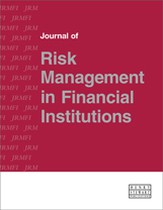How is risk management contributing to financial stability? The perspective of a European-GSII
Abstract
By giving an overview of the progress made on risk-based capital frameworks over the last decade, notably in Europe through Solvency II, this paper sheds light on the operational consequences it has had on the insurance sector in Europe. This notably consists of improving the entire risk management framework, starting with pure calculation enhancement (as part of pillar 1), the use of the risk appetite framework and the implementation of the own risk and solvency assessment process. Having described the main features of the regulatory requirements put forward by the Financial Stability Board and the International Association of Insurance Supervisors for globally systemic insurers (G-SIIs) and the requirements, this paper explains the role of the Solvency II framework with regard to the recent designation of a list of G-SIIs. In conclusion, as economic capital modelling (including Solvency II) and the documentation part of the systemic risk management framework have already led to a strong reinforcement of insurance groups, there is no evidence that new regulation on the capital front is needed to protect the financial system, especially one targeted only at the largest institutions which already benefit from advanced risk management frameworks (such as the higher loss absorption capacity).
The full article is available to subscribers to the journal.
Author's Biography
Alban De Mailly Nesle has been the Group Chief Risk Officer of AXA Insurance Company since September 2013. He is responsible for all the risks borne by the company, from financial to insurance and operational risks, as well as for the implementation of the Solvency II and systemic risk management projects. Alban joined AXA in 2000 and has held several positions since then, leading him from mergers and acquisitions for Asia and the US (2000–2007) to heading the group corporate finance department (2007–2010) and as chief financial officer of AXA MedLa region (2010–2013).
Citation
De Mailly Nesle, Alban (2015, October 1). How is risk management contributing to financial stability? The perspective of a European-GSII. In the Journal of Risk Management in Financial Institutions, Volume 8, Issue 4. https://doi.org/10.69554/ANHE1597.Publications LLP
